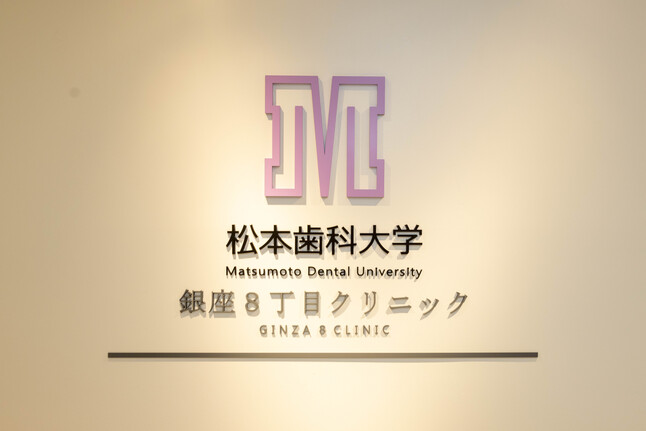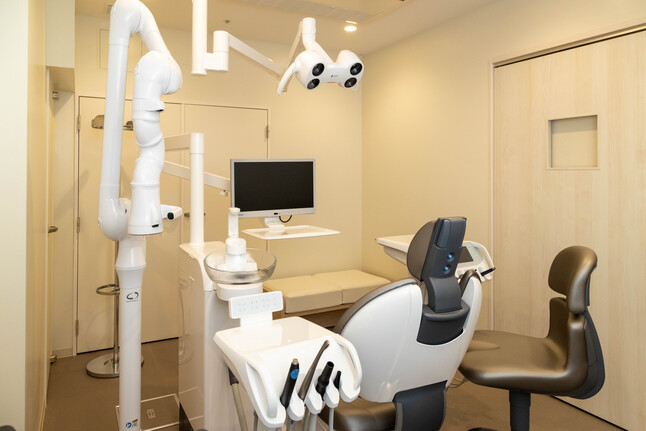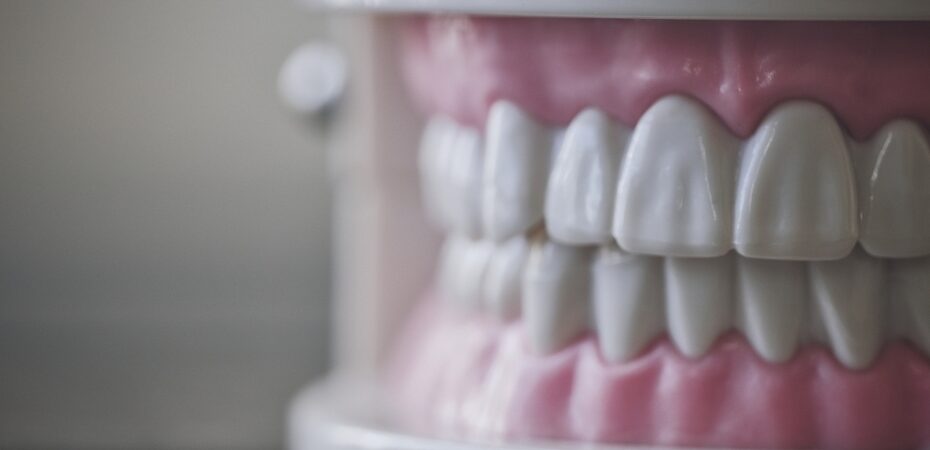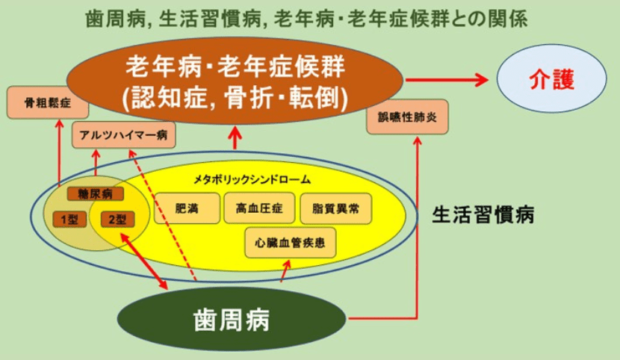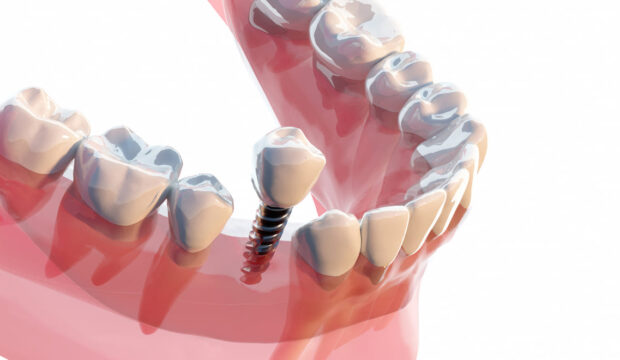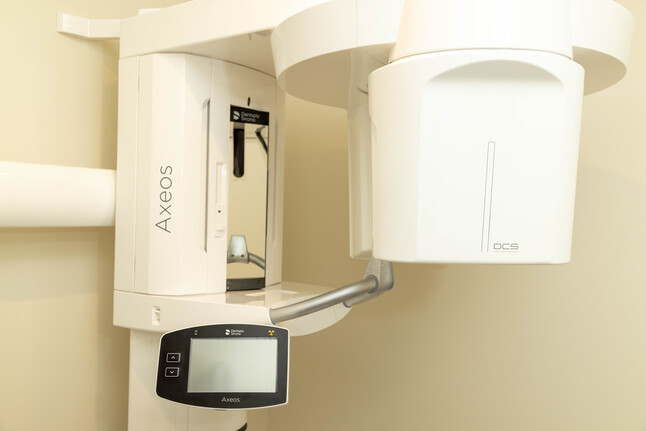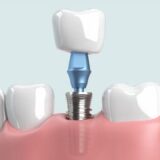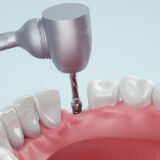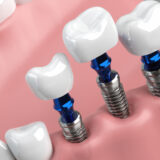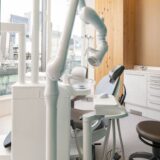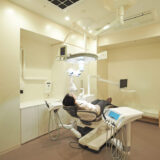Comparison with Other Treatment Methods
Pros and Cons of Each
It is important to thoroughly discuss treatment options with your attending physician after understanding the pros and cons of each method.
The main drawback of bridges and dentures is to put a burden on the remaining teeth and gums.
Dental Implants
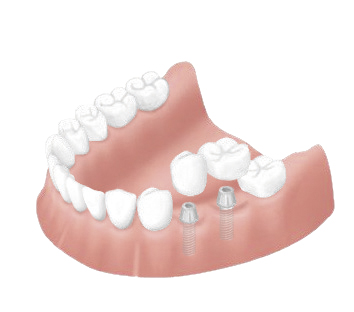
Implants involve embedding an artificial tooth root (implant body) in place of a lost tooth root, and then attaching an artificial tooth on top.
Able to chew hard foods

No sense of discomfort

Natural appearance

Not covered by insurance
(some exceptions apply)

- Dental implants are being embedded in the jawbone allows you to eat much like with your natural teeth.
- Doesn't burden surrounding teeth.
- Requires a simple surgery.
Bridge

Require adjacent teeth to be used as abutments for bridges.
Difficult to chew hard foods

Sense of discomfort more than implant

Relatively natural appearance

Covered by insurance
(varies by material)

- Lesser discomfort due to being fixed.
- Adjacent healthy teeth need to been cut-back and reshaped
- Put burden on neighboring teeth.
- Food can get stuck in dummy teeth, making cleaning difficult.
Denture
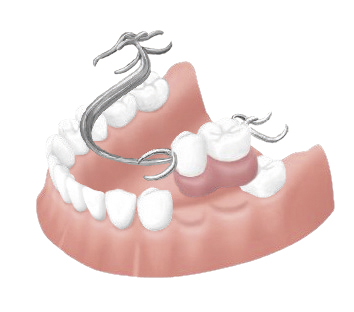
A method to restore a lost tooth area using artificial teeth and denture base.
Partial dentures and complete dentures are available.
Cannot chew hard foods

Sense of discomfort

Poor aesthetic appearance

Covered by insurance
(varies by material)

- Doesn't need to cut-back and reshaped adjacent healthy teeth.
- Food can easily get stuck, leading to cavities and bad breath.
- Significant sensation of discomfor
- For insurance-based treatment, unsightly components like springs may be visible.
Implant structure
Structure of Dental Implants consists of three parts.
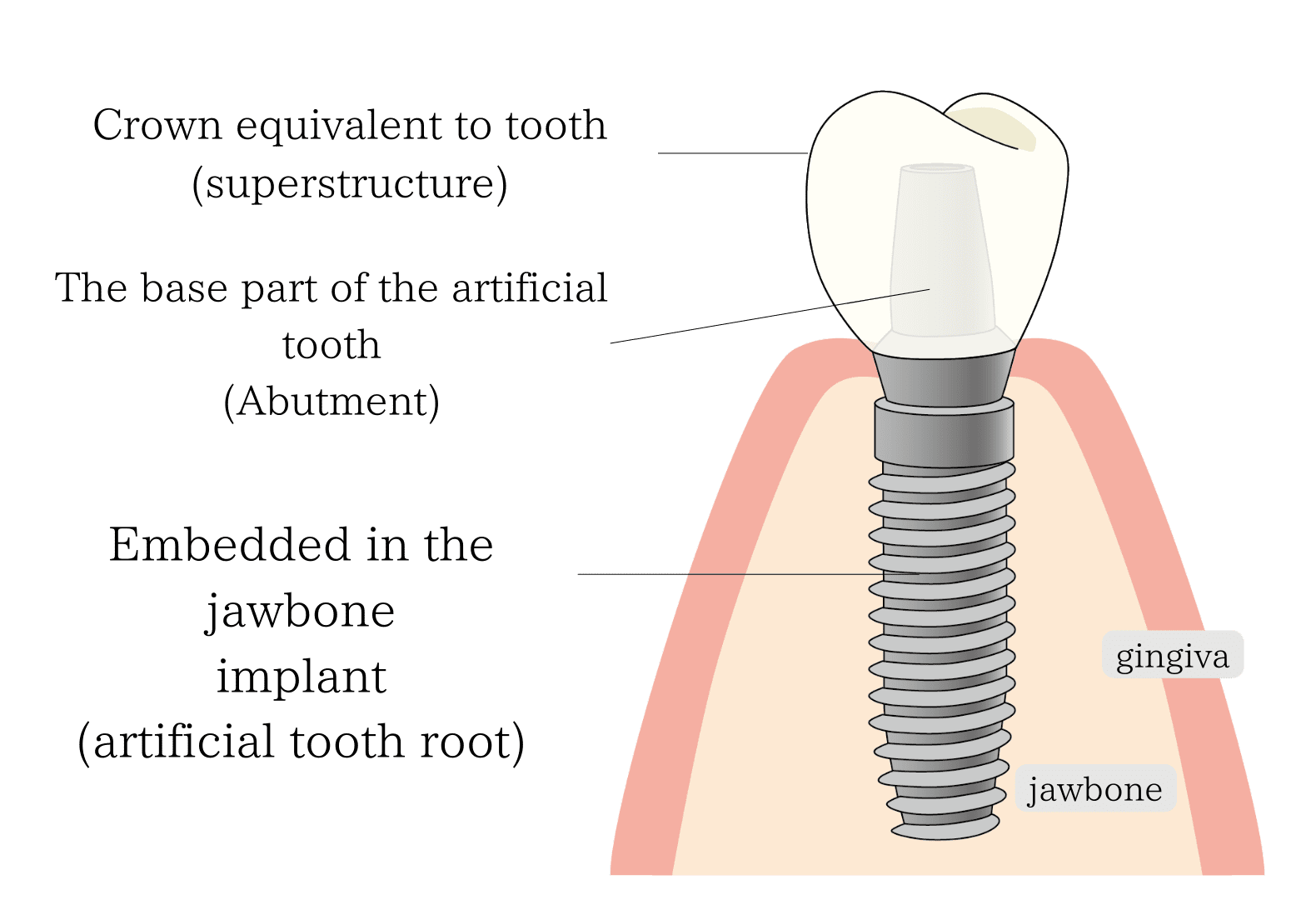
Types of Dental Implants
One-stage Method
One-stage Method is that implant surgery and temporary tooth attachment are done in a single session.
Two-stage Method
Two-stage Method is implant surgery and temporary tooth attachment are done in two separate sessions.
Aiming for Longevity and Health with Implants
Prevention of oral frailty is the key
In Japan’s super-aging society, the prevention of “oral frailty,” a state where oral function is gradually declining, has become a challenge.
As people age, the loss of teeth due to periodontal disease or cavities leads to a decrease in chewing ability
Gradually, dietary habits shift towards softer foods, leading to imbalanced nutrition and a state of malnutrition.
This, in turn, contributes to a decline in overall bodily functions.
According to research, individuals classified as having oral frailty are reported to have a 2.4 times higher risk of experiencing a decline in physical functions compared to those with healthy oral function.
However, addressing oral frailty in its early stages can restore individuals to a state of good health.
A crucial point is treating tooth loss and restoring the ability to chew.
Particularly, implant treatment is known to be more effective in improving masticatory function compared to dentures or bridges.
With implant treatment, let’s work towards preventing oral frailty and aiming for an energetic and independent lifestyle.
For More Detailed of Dental Implant Information
Please check the overview
Providing personalized optimal treatment for each individual.


